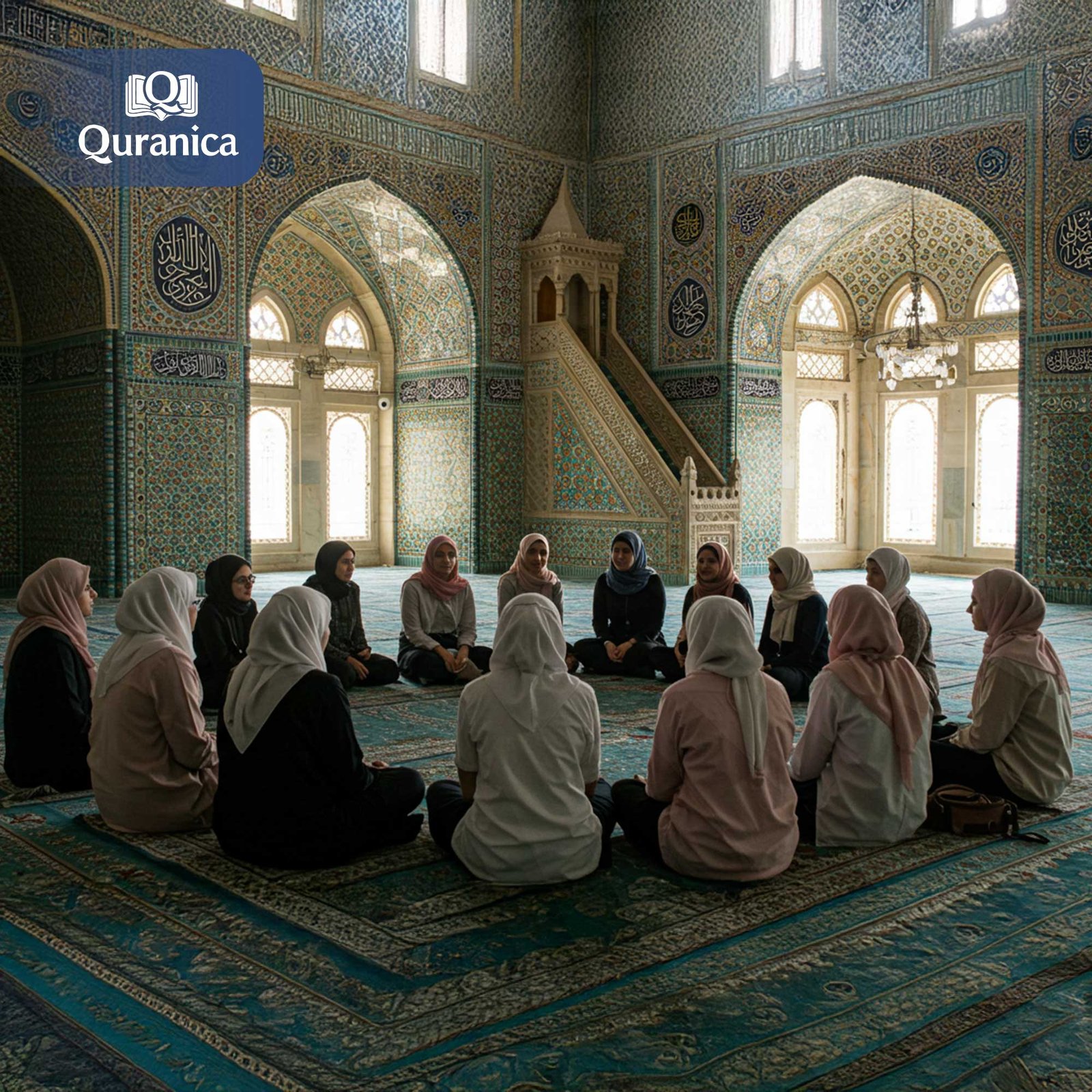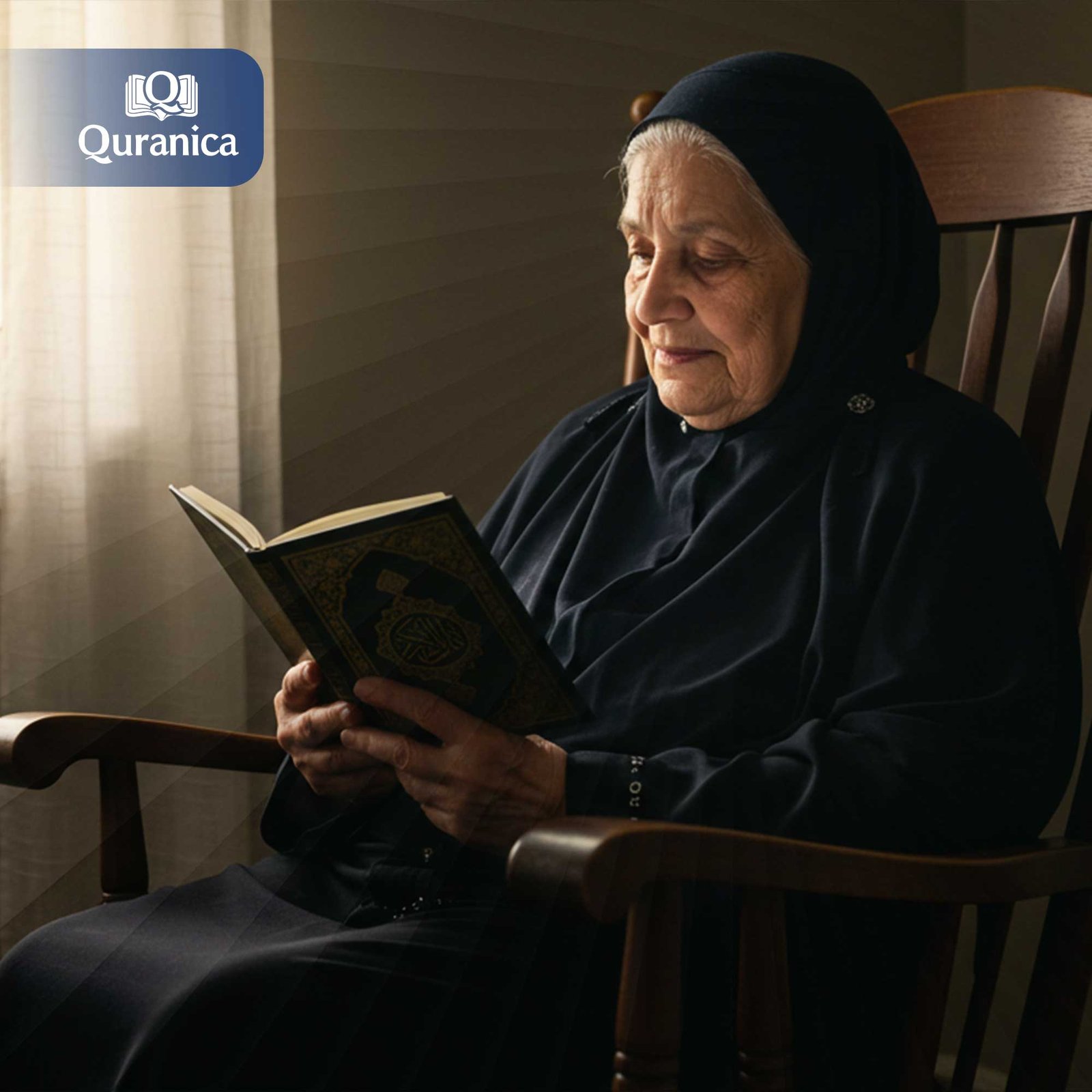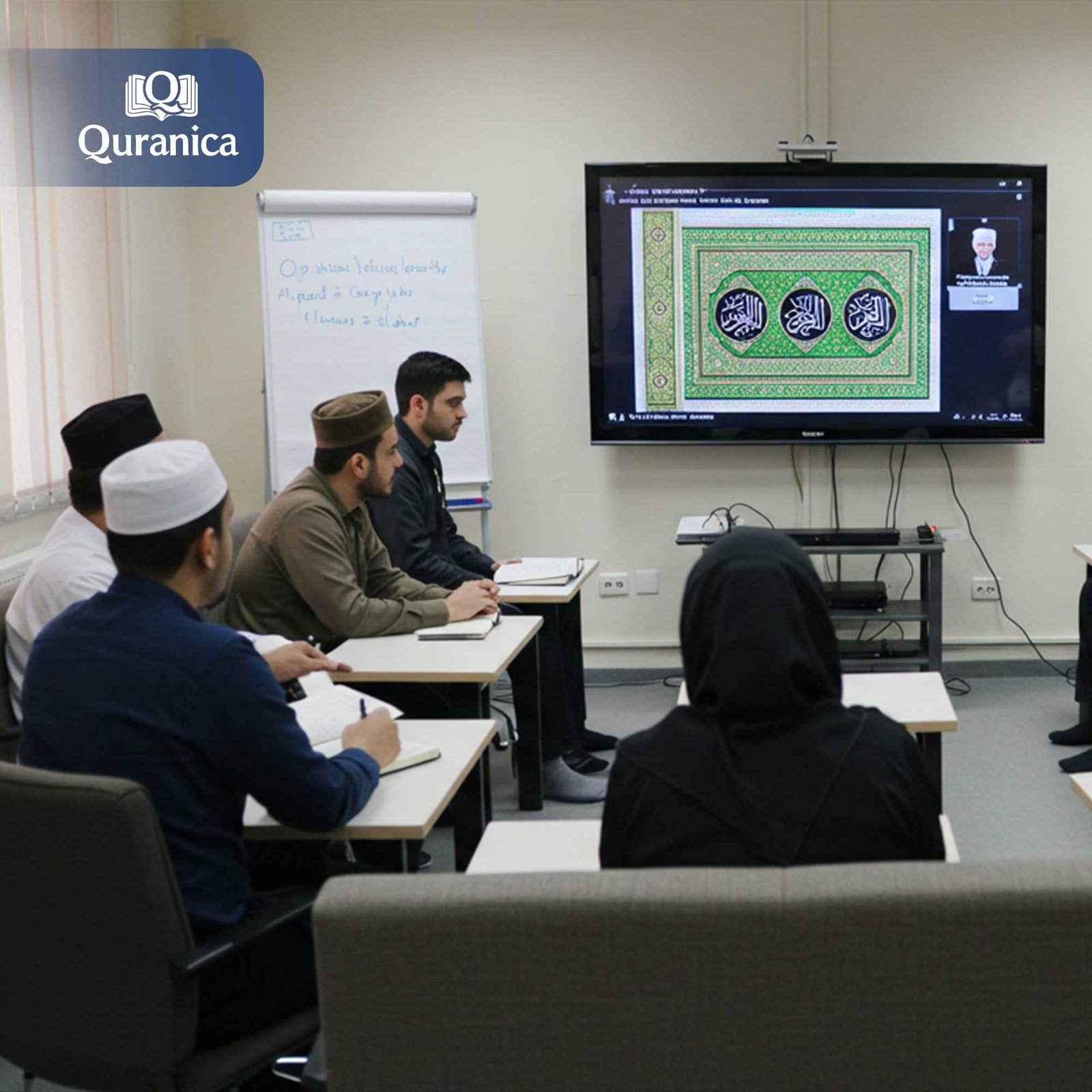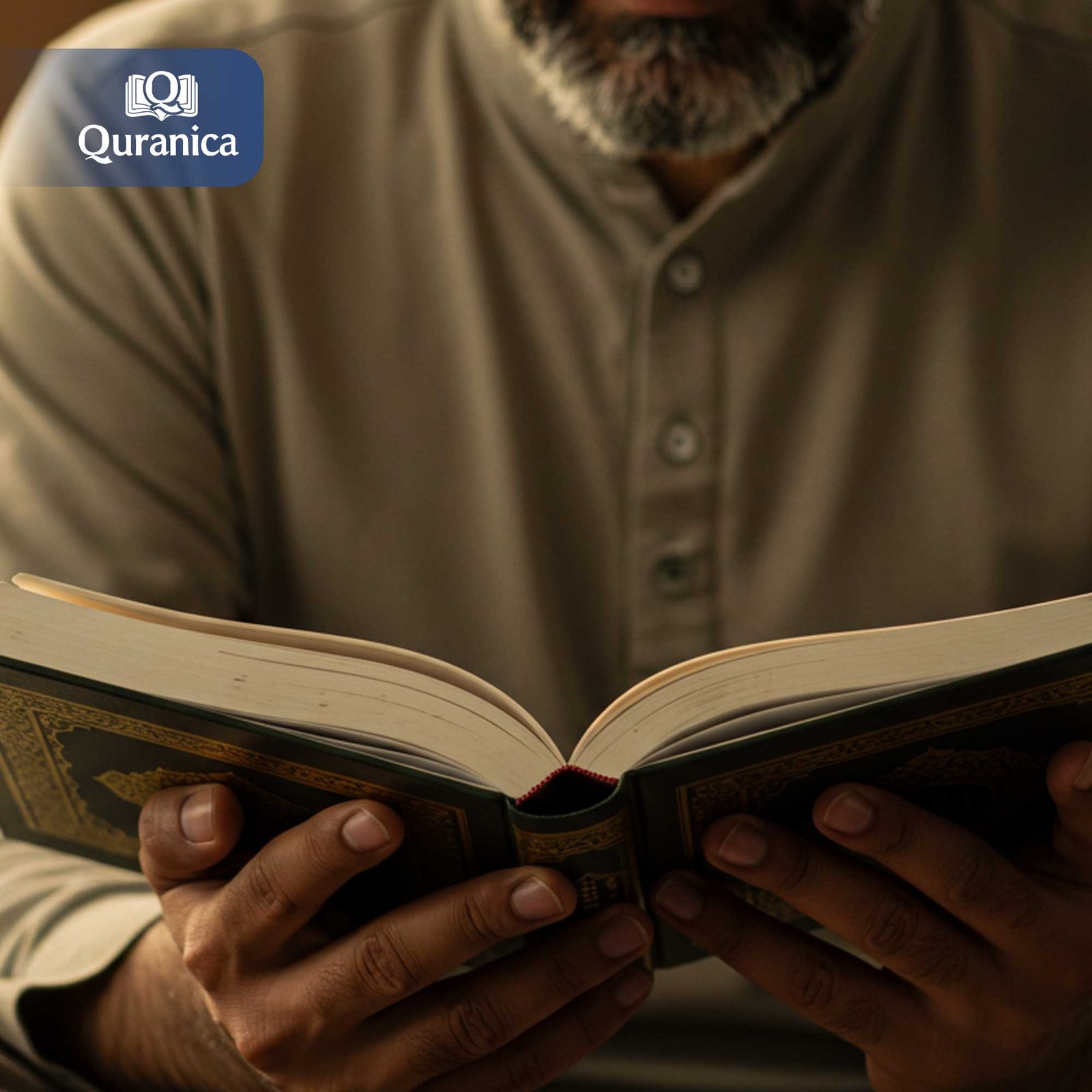Online Quran recitation course
Original price was: $8,00.$6,00Current price is: $6,00.
Enroll in an online Quran Recitation Course that will help you have correct pronunciation a deep understanding of Quran recitation and can guide you with true knowledge.
Just as the verses of Surah Al-Muzzammil encourage Muslims, “And recite the Quran with measured recitation.” (73:4), we at Quranica will guide you step-by-step to achieve a beautiful and measured Quran recitation.
At Quranica, we believe that every Muslim, regardless of their background or current level of Arabic language knowledge, can learn to recite the Quran with tajweed. With the right direction and dedication, this is possible for all Muslims, InshaAllah. We will give you this guidance and help you to become the best Quran reciter you can be.
About Our Online Quran Recitation Course
This Quranic recitation course is structured into four progressive levels, each building upon the previous one. Level 1 focuses on foundational skills, including learning the Arabic alphabet, correct pronunciation (Makharij), and basic Tajweed rules.
Level 2 expands on these foundations by exploring different types of Madd and the rules of Noon Saakinah and Tanween, with practice in reciting Juz’ Amma.
Level 3 delves into advanced Tajweed concepts, such as detailed articulation point analysis and advanced characteristics of letters, while practicing the recitation of longer Surahs.
Finally, Level 4 culminates in the complete recitation of the Quran with a Hafiz, along with techniques for memorization, leading to certification and Ijazah.

Level 1 - Foundations of Quranic Recitation with Noorani Qaida
In this level of our Quranic recitation course, we focus on building a strong foundation Using the Noorani Qaida. We will start with the very basics, ensuring you have a firm grasp of the Arabic letters, their correct pronunciation (Makharij), and their characteristics (Sifat). It is the most important stage in your learning how to recite Quran.
Learning Everything About the Arabic Letters to Recite Quran Properly
We’re going to start by learning the Arabic alphabet. This is the base for everything in the Quran. We’ll see how each Arabic letter looks, and you’ll learn the right way to pronounce it. You’ll understand where in your mouth each sound comes from.
We will ensure you can pronounce each letter correctly, understanding the subtle differences between similar-sounding letters, like “ق” (Qaf) and “ك” (Kaf). This is the bedrock of proper recitation.


Introduction to Basic Tajweed Rules for Correct Quran Recitation
Once you have a good grasp of the Arabic letters, we will introduce you to fundamental Tajweed rules. These rules, like the elongation (Madd) and stopping rules (Waqf), add rhythm and beauty to your Quran recitation.
For example, knowing when to elongate a vowel, as in the word “الضَّالِّينَ” from Surah Al-Fatiha, can completely change the flow of your recitation.
Simple Quran Recitation Exercises
We will practice reciting selected short Surahs, like Al-Fatiha and Al-Ikhlas. These exercises will help you apply the rules you’ve learned and build your confidence in reciting the Quran.
These are your first steps in reciting the words of Allah correctly and beautifully.

Level 2 - Essentials of Tajweed Application for Correct Recitation
In this level of our Quranic recitation course, you’ll expand your knowledge of Tajweed rules and learn how to apply them more consistently in your Quran recitation.
Learning Types of Madd
We’ll explore the different types of elongation (Madd) in more detail. You’ll learn to differentiate between Madd Asli (natural elongation) and Madd Far’i (secondary elongation), and how to apply them correctly.


Rules of Noon Saakinah and Tanween
You will learn the rules governing the pronunciation of Noon Saakinah and Tanween, which are essential for a smooth and accurate recitation. Learning these rules is important for reciting verses like “مِن شَرِّ مَا خَلَقَ” (Surah Al-Falaq, 113:2) correctly.
Recitation of Juz’ Amma
We will practice reciting Surahs from Juz’ Amma, applying all the Tajweed rules you’ve learned so far. This will further enhance your fluency and help you internalize the rules. You’ll find yourself reciting with greater ease and understanding, MashaAllah.

Level 3 - Advanced Tajweed Mastery for Perfect Recitation
In this level, we aim for mastery. We will explore the more intricate aspects of Tajweed, refining your pronunciation and enhancing the beauty of your Quran recitation to a whole new level.
Detailed Articulation Point Analysis
We will delve deeper into the Makharij مخارج الحروف (articulation points) of each letter, understanding the precise placement of the tongue, lips, and throat to produce the perfect sound. This is where you’ll truly refine your pronunciation.


Advanced Characteristics of Letters (Sifat)
We’ll explore the advanced Sifat (characteristics) of letters صفات الحروف, such as whispering (Hams) and strength (Shiddah). These subtle nuances add depth and richness to your Quran recitation.
For instance, understanding the quality of Qalqalah (bouncing sound) in letters like Qaf (ق), as in “ٱلْفَلَقِ” from Surah Al-Falaq, will make your Quran recitation more precise.
Recitation of Longer Surahs
We will practice reciting longer Surahs, focusing on maintaining fluency, rhythm, and proper application of all Tajweed rules. This will prepare you for reciting any part of the Quran with confidence and beauty.

Level 4 - Complete Quran Recitation
This is the level where you will, InshaAllah, recite the entire Quran with your teacher, applying all the Tajweed rules you have mastered. This level is about achieving a beautiful, accurate recitation of the entire Quran.
Complete Quran Recitation with Your Teacher
In this final stage, you will recite the entire Quran, from beginning to end, under the watchful eye of your dedicated teacher. We will guide your reciting through each verse, each Surah, ensuring your Tajweed is accurate and your Quran recitation is correct.


Techniques for Memorization
As you recite, we’ll also explore effective techniques for memorization, should you wish to go on the blessed path of becoming a Hafiz/Hafiza (one who has memorized the Quran).
Certification and Ijazah
Upon successful completion of this level, you will receive a certificate of completion, and we will prepare a physical Ijazah for you, sent with care through a trusted shipping company. This Ijazah will be a testament to your dedication, perseverance, and mastery of Quran recitation.

Who Are the Teachers of Quran Recitation Goals?
Our teachers have an average of 5 years of experience teaching Quran to non-Arabic speakers online. They are skilled in using methods which is very effective for beginners. They know the challenges you may face and how to overcome them. We have helped many students like you achieve their Quran recitation goals, and we can do the same for you, InshaAllah.

Muhammad Yaser
Experienced Tajweed Teacher for All Learners
Master Tajweed with a Native Speaker: Muhammad Yaser offers exceptional expertise as an online Tajweed teacher, bringing authentic knowledge from his deep understanding of Arabic and Quranic recitation. His experience with the subtleties of the language makes mastering Tajweed easier and more natural for learners at all levels.

Muhammad Ashraf
Skilled Tajweed Teacher for All Levels
Azhar Graduate – Expert in Tajweed and Quran Recitation: Muhammad Ashraf, a distinguished graduate from Al-Azhar University, brings extensive knowledge and expertise as a Tajweed teacher. His deep understanding of Tajweed rules and Quranic recitation makes him a highly sought-after online Tajweed teacher.

Muhammad Saad
Your Expert Tajweed Teacher for Practical Fluency
Certified Tajweed Teacher and Quran Specialist: Muhammad Saad is a dedicated Tajweed teacher with a strong academic background from Al-Azhar University. His expertise lies in teaching Tajweed rules with precision and clarity, ensuring students master Quranic recitation.

Menatullah Khaleel
Professional Tajweed Teacher for All Ages
Azhar Graduate – Specialist in Tajweed and Quranic Recitation: Menatullah Khaleel, a graduate from Al-Azhar University’s Language and Translation Department, is a skilled Tajweed teacher with a unique combination of linguistic proficiency and Islamic education. Her expertise in teaching Tajweed ensures that students learn Quranic recitation with accuracy and depth.
Why Choose Quran Recitation Course From Quranica?
Our Quran Recitation Course helps you develop Quranic recitation skills. We provide dedicated guidance for all levels, from beginners to advanced learners. Each lesson focuses on correct recitation and proper Tajweed rules.
Expert Arab Teachers with Ijazah
Our teachers are all native Arabic speakers who have memorized the Quran and hold an Ijazah.
Personalized Learning Just for You
We offer a free evaluation session to create a personalized learning plan for you because every student has unique needs and goals.
Focus on Tajweed and Understanding
Our Quran recitation course focuses on understanding and applying Tajweed rules, enabling you to recite beautifully and meaningfully, connecting deeply with Allah’s words.
Flexible Scheduling to Fit Your Life
We offer flexible scheduling to fit your busy life. You can study in the morning, day, or night. We want to make Quran learning accessible to everyone.
Proven Methodology for Non-Arabic Speakers
Our experienced Quran teachers are skilled at teaching non-Arabic speakers and can help you reach your Quran recitation goals, InshaAllah.
Certificates and Ijazah
We offer certificates for all levels and a traditional Ijazah in Quran recitation for those who qualify. This Ijazah will be prepared carefully and sent to you anywhere in the world.
Start Learning Quran Recitation Now With Quranica
Join Quranica to learn Quran recitation. We’ll guide you step-by-step to achieve your dream of reciting beautifully with confidence and accuracy. Take your first step and join our family today!

Common Questions
Do I need any prior knowledge of Arabic or Quran to join this recitation course?
Not at all! We start from the very beginning, teaching you the Arabic alphabet and basic pronunciation. We will teach you everything from the beginning, InshaAllah, using the Noorani Qaida method, which is perfect for beginners.
How long will it take me to learn to recite the Quran fluently?
This depends on your effort, your starting level and the time you dedicate to learning. But with our personalized plans and your dedication, you will see progress quickly. For example, you can finish Noorani Qaida in 22 hours of studying!
Are the classes in the recitation course live or pre-recorded?
All our classes are live and interactive with your teacher. This way, you can ask questions, get immediate feedback. It is important to have that connection with your teacher during learning recitation.
How do I know if the teacher is qualified?
All our teachers are native Arabic speakers, have memorized the Quran (Hafiz), and hold an Ijazah. They also have experience in teaching non-Arabic speakers online. You can trust that you are learning from the best, InshaAllah. We choose our teachers very carefully.
What is the Ijazah, and how can I obtain it?
The Ijazah is a certificate, a chain of narration, that goes all the way back to the Prophet Muhammad (peace be upon him). It means you have learned to recite the Quran correctly and are authorized to teach it to others. After you complete the higher levels and show mastery of Tajweed, you may be eligible for an Ijazah.



Reviews